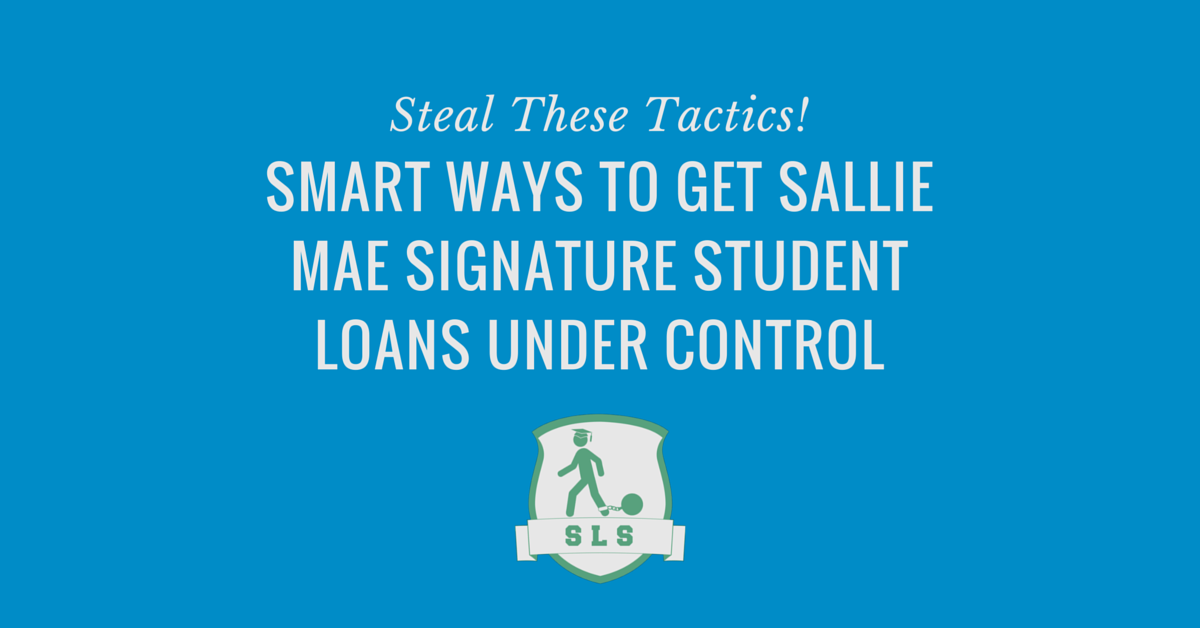We’ve talked about private student loans on the show before, most recently in Episode 029 when we reviewed the pros and cons of defaulting on your private student loans on purpose. Today we’re going to look at what happens when you’re making the payments but need some help getting the balance under control more effectively.
To do that, we’re going to answer a listener question from Meredith. She sent in the following question:
I am the first person in my family to go to college. The only thing I knew about paying for college came from the financial aid office at my college; they gave me a pamphlet about the Sallie Mae Signature Student Loan, and that’s what I took out every year.
I graduated in 2009 with about $80,000 in private student loan debt at a 9.25% interest rate. I graduated with a teaching degree in 2009 and couldn’t get a permanent teaching job, so I worked as a teacher’s aid making $10.50 an hour. I was unable to pay my student loans, so I deferred. Every employer told all teachers need a Master’s Degree, so I went back to school, putting my loans in deferment for 2 1/2 years.
Interest kept accumulating on the balance during the deferment periods, and by the time I finished my Master’s Degree I owed $150,000.
Sallie Mae wanted me to pay $1,500 a month; I couldn’t afford the payments, so Sallie Mae put me on an interest-only payment plan of $1,200 a month. It wasn’t much better, but that’s all they offered to help me.
After a year, I filed s complaint against Sallie Mae, and the company proposed a rate reduction plan of 3%.
Since 2014, I’ve been making two payments every month to them of $740 and $80. I’ve never defaulted but every year they increase my interest by .5% and threaten to kick me out of my rate reduction plan and to put me back to 9.25%.
It’s been a struggle; I ‘m a full-time teacher now, but I will be paying this until I’m 53 years old – assuming I can continue to afford it. I live minimally, but I wish I could file for bankruptcy because I have to provide for two children. Any advice would help!
Though the Sallie Mae loan is a private loan and doesn’t come with any income-dependent repayment options, loan forgiveness or other benefits of federal student loans, there are ways for Meredith to take action to bring the balance down more effectively.
The first problem is something she may not even realize. Most of the Sallie Mae Signature Student Loans carried (they don’t offer Signature Student Loans anymore) variable interest rates that can change on a monthly basis. With a fixed repayment period and payment amount, the variable interest rate almost guarantees that the balance won’t be paid off during that repayment period. Instead, there will be a final balance at the end of the repayment term, and that balance will need to be paid off in a single payment at the end of the loan.
Take a look at this sample Sallie Mae Signature Student Loan Promissory Note to see the terms usually in place on these loans.
Here are some of the steps I recommend to help make it easier to pay down the private student loans:
- review your budget to lower your monthly utility bills
- shop for less expensive insurance coverage
- reduce other types of debt
- consider bankruptcy to eliminate other debts and restructure student loan payments
Resources to Help You Take the Next Steps
- How to Do a Monthly Budget
- How to Cut Your Grocery Bill in Half
- Chasing Electrical Demons to Cut your Power Bill by 80%
- 11 Ways to Reduce and Save Money on Utility Bills
- How I Save $1,140 A Year On Cable Television Service
- Pay As You Drive Insurance Explained
- Using Bankruptcy to Restructure Student Loan Payments
Get My Best Student Loan Advice (FREE)
Enter your email address and I'll send you new episodes and other updates by email. 100% free, and you can cancel at any time (but you won't want to).

